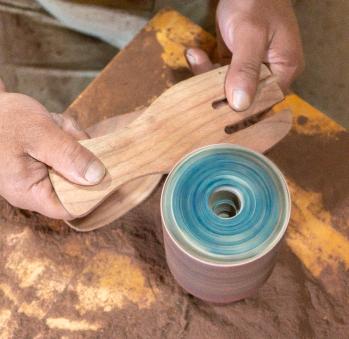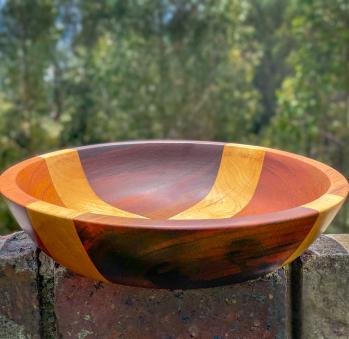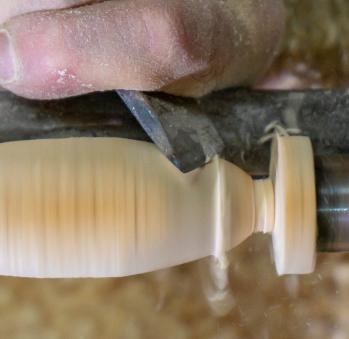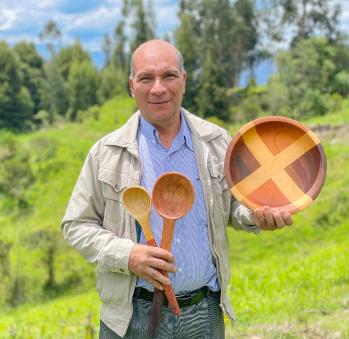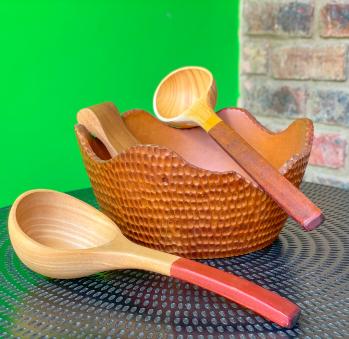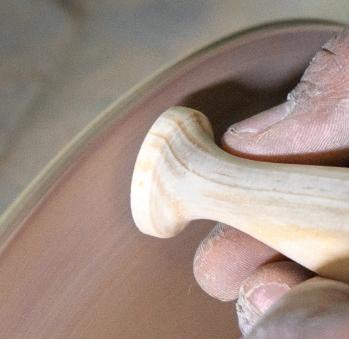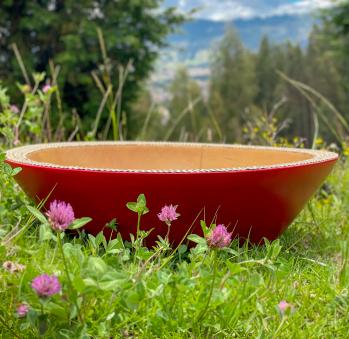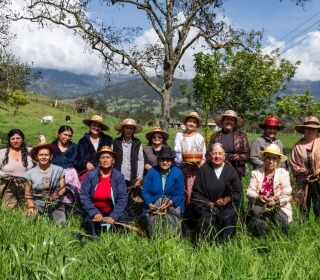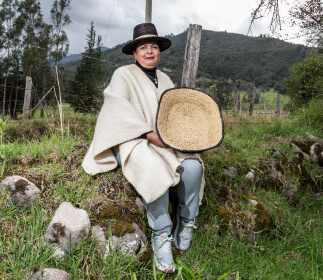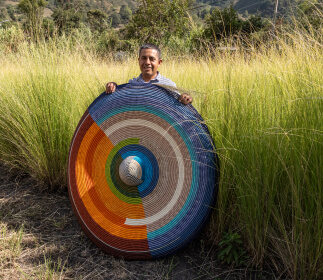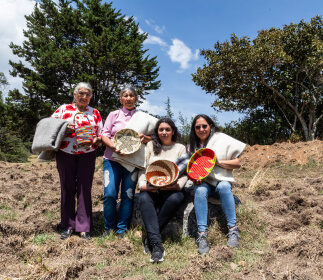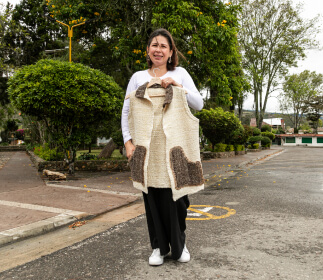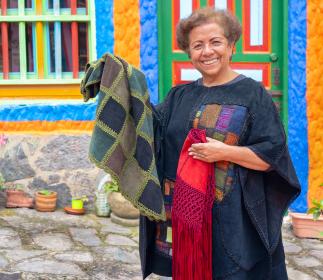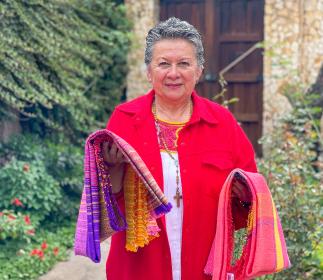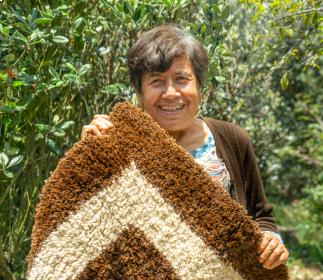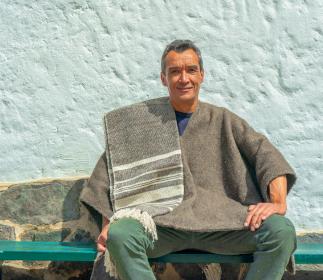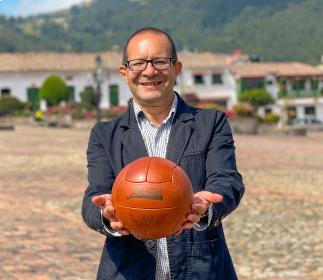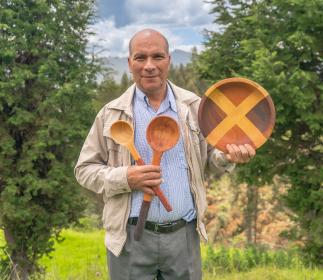Ángel Medardo Becerra
Workshop: Merarte
Craft: Trabajos en madera
Trail: Paipa-Iza and Paipa - Guacamayas Route
Location: Duitama, Boyacá
When he remembers his life, he is moved and his voice breaks for a moment. Because, going way back, long before his success, he remembers the people who watched him work the lathe and shape the wood they had always seen used in barely useful objects into beautiful wares. Without knowing that he had the talent in his veins and in his hands, he took what he had learned at home —what his grandparents and parents had always made: objects for the kitchen— and threw himself into the ring. Having lost his father at the age of five, hard work became something that constituted his character. Thus, when someone saw the wooden spoons he was making and asked him if he would try his hand at making artesas —little figures that resemble miniature fruit baskets and that were used for a long time to decorate refrigerators—, he said that, although he had never attempted to craft those types of wares, he would try. And he did. He had such good luck that the 80 dozen he put out every week quickly ran out. He recalls that there was a time when the calculations he made were for orders of thousands of cutting boards, churrasco boards, and pataconeras. He also remembers that he had a workshop made up of 60 people.
What surprises Medardo at this point in his life is that he really came up with everything he did thanks to the sheer will he had to dare to fulfill the the challenges he met. For, in order to achieve the goals that grew larger every day, he devised the tools with which he carved, as well as the molds and machines to turn the pieces of wood he needed. He laughs and is astonished of the dangers he went through trying to see how to improve even a little bit the manual processes he carried out. “We started our tests with a cup that I had especially ordered. We made a lathe and we pressed with a fixed cup that we glued with screws like a centrifuge…” He tells this as a folly of which he is a little repentant to show us that nothing was too big for him. He also tells of those early years in which he still lived in the village of Siratá, relatively far away from Duitama, where not only was it difficult to gather the raw materials he needed, but where the electricity was very unstable as well. Due to the latter, if he turned on his lathe and his saw, he left his neighbors without power. Nonetheless, since everyone saw him working and knew his spirit and his bravery, they encouraged him to not stop working, but to do it at a time other than 7 o’clock at night because watching the news was sacred for everyone. And so he did.
It so happens that everyone stayed watching him. Always. Because what he did was thorough. And detailed. And precious. Until one day he asked those who were watching him that why, instead of looking at him, they helped him. So he began to teach his trade. It cost him a lot: it took him several months to correct what his apprentices did, but he gave it his all. For three years he dedicated himself to teaching them. He needed to train labor to be able to meet the increasing amount of orders he received. He also started specializing in products for the dinner table and kitchen, as well as in ornamental wares for the house in willow, sapwood and pine. Cedar is practically never used any longer due to environmental conservation issues. While all of this was happening, he also got married. He was already “old”, as he says, and he moved to the urban center of Duitama. Everything became easier there since he began having a larger space available where he was able to build ovens to dry his wood with.
He has had a long life, marked both by success and the brutal falls his industry has suffered because of changes in the business. This made him return to what was the center of his work: instead of owning a factory that grew every day more massive, he returned to the artisanal fairs that allowed him to experiment with his materials and feel the wood closer to his hands. In this way, he started catching the same looks he did before.
Craft
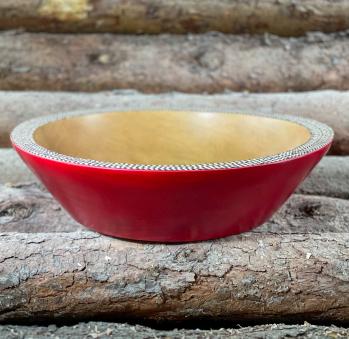
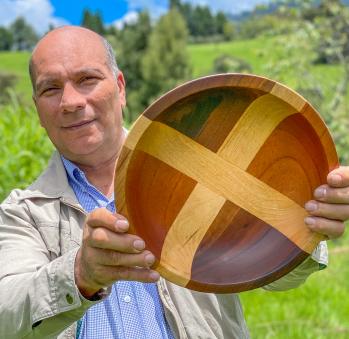
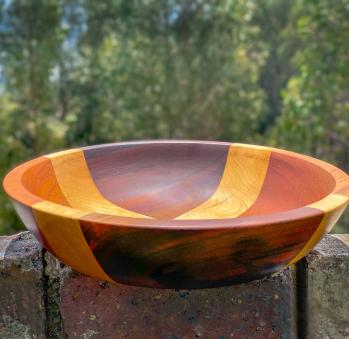

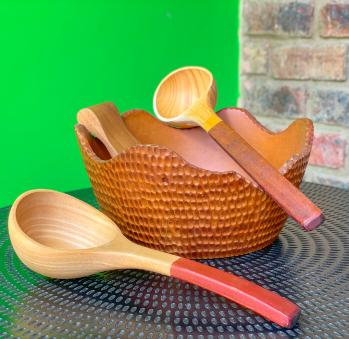





Artisans along the way
Artisans along the way
No puede copiar contenido de esta página








































